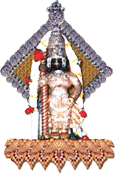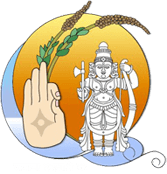न एनं छिन्दन्ति शस्त्राणि न एनं दहति पावकः
न च एनं क्लॆदयन्ति आपः न शॊषयति मारुतः ॥ २.२३ ॥
ನ ಏನಂ ಛಿಂದಂತಿ ಶಸ್ತ್ರಾಣಿ ನ ಏನಂ ದಹತಿ ಪಾವಕಃ
ನ ಚ ಏನಂ ಕ್ಲೇದಯಂತಿ ಆಪಃ ನ ಶೋಷಯತಿ ಮಾರುತಃ || ೨.೨೩ ||
na EnaM ChiMdaMti shastrANi na EnaM dahati pAvakaH
na cha EnaM klEdayaMti ApaH na shOShayati mArutaH || 2.23 ||
Weapons do not cut him, Fire does not burn him, Water does not wet him, Wind does not dry him. (him = the dweller in the body = soul)
Points:
1. According to Gita Bhashya EnaM applies to paramatma, while according to Tatparya it applies to jIva.
2. In this verse destruction of jIva, by natural or accidental causes or even extra-ordinary or special causes like Daksha sacrifice is ruled out.
3. As per grammar using the word EnaM once is enough. Yet this word is used thrice. This is to stress and make a strong emphasis to Arjuna the the jIva dwelling within Arjuna’s body and the jIvas within other bodies are eternal.
In the case of EnaM referring to Shri Krishna, it establishes that His deha (chidanandasvarupasya bhagavat dEhasya acChEdatvAt) being indestructible also.
In this case the repetition establishes that His avataras are not different. There is no difference among them and there is no gradation between them.


